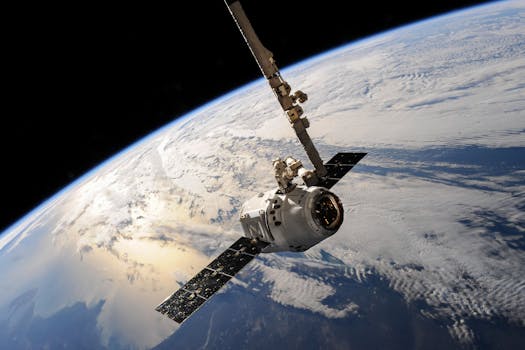
Beyond the Atmosphere: The Future of Satellite Technology for Surveillance and Connectivity
Beyond the Atmosphere: The Future of Satellite Technology for Surveillance and Connectivity is an exciting and rapidly evolving field, with new advancements and innovations emerging every day. Satellite technology has come a long way since the launch of the first artificial satellite, Sputnik, in 1957. Today, satellites play a vital role in various aspects of our lives, from navigation and communication to weather forecasting and Earth observation.
Satellite technology has revolutionized the way we communicate, enabling global connectivity and facilitating the exchange of information across the globe. With the advent of satellite-based internet services, people in remote and underserved areas can now access the internet and stay connected with the rest of the world. Satellites also enable surveillance and monitoring of the Earth’s surface, helping us track climate change, natural disasters, and other environmental phenomena.
The Evolution of Satellite Technology
The first satellites were simple devices that orbited the Earth, transmitting radio signals and providing basic communication services. Over time, satellite technology evolved, and new generations of satellites were launched with advanced capabilities and features. The introduction of geostationary satellites, which remain stationary above a fixed point on the Earth’s surface, enabled continuous communication and broadcasting services.
The development of remote sensing satellites enabled the collection of data and images of the Earth’s surface, which has been instrumental in monitoring environmental changes, tracking natural disasters, and managing natural resources. The launch of satellite navigation systems, such as GPS and GLONASS, has enabled precise navigation and positioning, transforming the way we travel and conduct various activities.
Current and Future Developments in Satellite Technology
Today, satellite technology is experiencing a new wave of innovation, driven by advances in materials science, computing, and data analytics. The development of small satellites, also known as CubeSats, has made it possible to launch satellites at a lower cost and with greater ease. These small satellites can be used for a variety of applications, including Earth observation, communication, and scientific research.
The introduction of satellite constellations, which involve launching multiple satellites into orbit, has enabled the provision of global communication services, including internet access and navigation. Companies like SpaceX, Amazon, and OneWeb are launching satellite constellations to provide high-speed internet services to underserved areas and to enable global connectivity.
Advances in satellite imaging and sensing technologies have enabled the collection of high-resolution images and data, which can be used for various applications, including surveillance, environmental monitoring, and disaster response. The development of satellite-based sensors and IoT devices has also enabled the monitoring of various environmental phenomena, such as climate change, air pollution, and ocean health.
Challenges and Opportunities in Satellite Technology
Despite the many advances and innovations in satellite technology, there are still several challenges that need to be addressed. One of the major challenges is the issue of space debris, which poses a significant threat to the sustainability of space exploration and satellite operations. The development of sustainable and responsible space practices is essential to mitigate this risk and ensure the long-term viability of satellite technology.
Another challenge is the need for regulatory frameworks and international cooperation to govern the use of satellite technology and to address issues related to privacy, security, and intellectual property. The development of global standards and guidelines for satellite technology is essential to facilitate cooperation and innovation in this field.
Despite these challenges, the future of satellite technology holds great promise and opportunities for innovation and growth. The development of new satellite-based services and applications has the potential to transform various industries, including communication, navigation, and environmental monitoring. The use of satellite technology can also help address some of the world’s most pressing challenges, such as climate change, poverty, and inequality.
Conclusion
In conclusion, Beyond the Atmosphere: The Future of Satellite Technology for Surveillance and Connectivity is a rapidly evolving field, with new advancements and innovations emerging every day. Satellite technology has the potential to transform various aspects of our lives, from communication and navigation to environmental monitoring and disaster response. While there are challenges that need to be addressed, the opportunities and benefits of satellite technology are numerous and significant. As we look to the future, it is essential to continue investing in research and development, to promote international cooperation and regulation, and to ensure that the benefits of satellite technology are shared by all.
